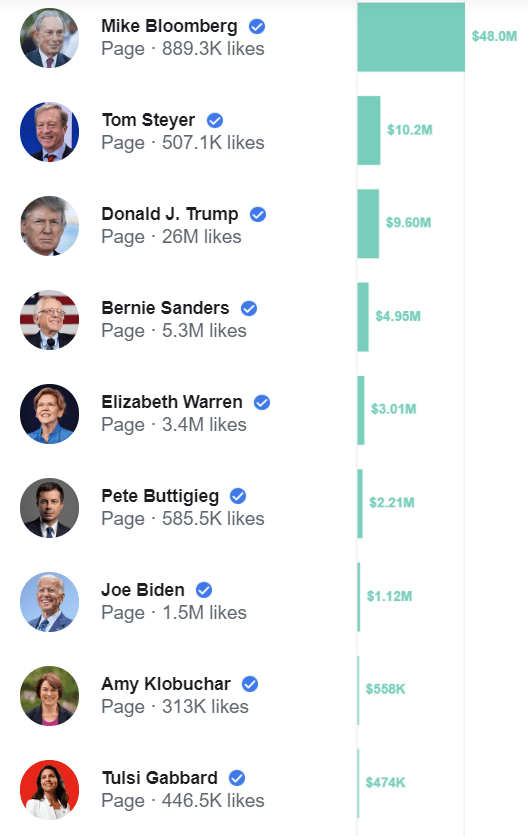According to CNBC, Facebook is considering taking steps to make it clearer that these messages come from paid staffers, though it did not disclose what options it’s considering exactly. The company told CNBC: Taking such precautions seems like a no-brainer. After the drama of Cambridge Analytica and the misinformation of the 2016 campaign, Facebook has taken some steps to improve transparency around political advertising. The company has repeatedly promised a commitment to avoiding a similar screwup in this year’s elections, and one of the major improvements of the new direction includes a readily searchable library of political ads. Bloomberg leads in ad spending by far. To put Bloomberg’s campaign spending into context, he has invested $48 Million on Facebook ads alone, and nearly all of that has come within the last 90 days. That’s more than all of his Democrat rivals have spent over the same time period… combined (including 10.2 million alone from fellow billionaire Tom Steyer). By comparison, Donald Trump has spent $9.6 Million.
However, this does not include posts by paid staffers, which are arguably ads themselves. Bloomberg campaign staffers are paid well above those of his opponents; Bloomberg state press secretaries earn about $10,000 a month, compared to the $4,500 average for other candidates. Bloomberg’s “deputy digital organizers” earn $2,500 a month for 20-30 hours of work promoting the candidate through social media. Facebook aside, Bloomberg has spent $450 million on ads since his late entry into the 2020 presidential race. That’s also more than his opponents in the Democratic Primary opponents combined, if you leave out Steyer.
